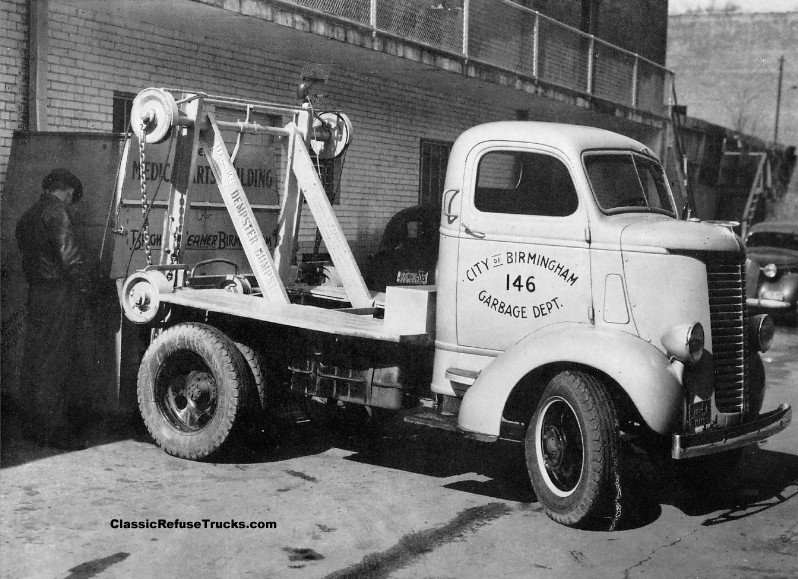The first garbage trucks were ordered by Chiswick District Council in 1887. They were not much different from a regular dump truck. There were a number of issues with the first iteration, such as drivers manually needing to lift the garbage to the truck. The most noticeable issues were the fact that trash regularly fell out the back and the smell. Before these, horse drawn wagons were the standard for waste removal. In 1914, these
early garbage trucks first made their way over to the United States.
Early Developments
In 1915, Mack introduced a new model of truck built specifically for waste management. This new model featured roll down sides to help the operators get waste over the rims of the waste bins on the back. Chain guards on the truck prevented refuse from getting into any driving mechanisms.
Europe, due to having a denser population than the US, was immediately concerned with the smell and the refuse falling onto the city streets. Covered garbage trucks were initially introduced in Europe, and the innovation quickly made its way around the world due to its advantages.
In 1929, the Heil Collector came out to solve the problem of manually loading trash into the bin. This model featured a bucket that could be loaded with refuse then lifted to the top of the truck to fill it through an opening. This was considered one of the first standard garbage trucks, and it is what future garbage trucks are based on.
The Dempster-Dumpster and the Garwood Load Packer
The next big advancement to garbage trucks came about in 1937. George Dempster created the Dempster-Dumpster system. George was aware of the manual labor that went into waste collection, and sought to make a system to lighten the load on the workers. The system included large bins (or dumpsters) that were lowered to the ground mechanically and loaded by the workers. Then the dumpsters were mechanically lifted up and back onto the truck. Overall, this cut the amount of labor needed by 75%.
Around the same time in 1938, the Garwood Load Packer was created. This was the first refuse truck that featured a packer. The packer was made possible thanks to hydraulic presses, and doubled a garbage truck’s load capacity. Overall, the Dempster-Dumpster and Garwood Load Packer eventually became standard features on garbage trucks, and paved the way for the rear loading and front loading garbage trucks. The dumpster in the Dempster-Dumpster system became inspiration for modern front loaders, while the Garwood Load Packer brought about the rear loading garbage truck design.
Modern Renovations
After the Dempster-Dumpster and the Garwood Load Packet, improvements to garbage trucks were not large pushes in technology, but rather small innovations. Around the time that front loaders were becoming commonplace, the automated side loader garbage truck (ASL) was first made in 1969. ASL’s quickly became popular because of the fact that the driver/operator never needed to leave the vehicle. This led to other types of refuse trucks adopting automated arms as they were proven to reduce workplace injuries and labor costs.
Looking Forward To The Future of the Modern Garbage Truck
While safety and efficiency are always going to be key values in modern garbage trucks, industries are looking for ways to innovate in the modern world. Separating organic trash from non-organic trash, converting waste into energy, implementing more robotics onto garbage trucks, the list goes on into possible new developments in the waste management industry. Contact us today to discuss your used garbage truck needs.

